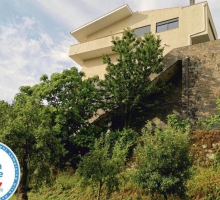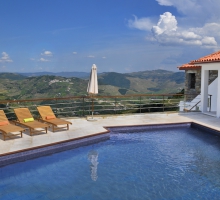The Poldras Mill site, near the Távora River, is a place of rare beauty where visitors can enjoy a century-old natural landscape.
The grinder system is a fine example of this industry. This built and cultural heritage has been abandoned and disappeared due to the arrival of more profitable milling industries, the construction of the Vilar-Tabuaço Dam and the decline in cereal crops.
Although the mill is small, we can see that it is a very old construction due to its materials, the place where it was built and the engineering technique used. Recovered in 1997, the identity of the mill, characteristic of its location, has been preserved. The restoration work has brought back the splendour of old times to the original structure. This is a testimony we need to preserve.
The mill is situated between two very large granite boulders that serve as walls. The other two walls are in schist and the structure has a gabled roof covered with thin schist slabs.
The mill takes its name from the “poldras” (fillies) or “alpondras” (stepping stones), vertical rocks systematically aligned and distanced so that people can step on them at a steady pace and balance in order to cross safely, as the upper part of the stones are horizontal.
Location: Tabuaço




